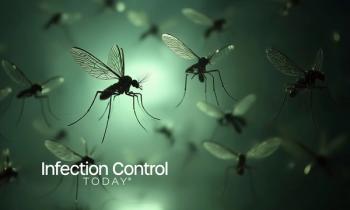
More Than Skin Deep: New Layer to the Body's Fight Against Infection
The layers of skin that form the first line of defense in the bodys fight against infection have revealed a unanticipated secret. The single cell type that was thought to be behind the skins immune defense has been found to have a doppelganger, with researchers from the Walter and Eliza Hall Institute showing the cells, despite appearing identical, are actually two different types.
Dr. Michael Chopin (left) and Dr. Stephen Nutt have revealed that Langerhans cells, the single cell type behind the skin's immune defense, actually has two types. The finding could have repercussions for infections and cancer.
The layers of skin that form the first line of defense in the bodys fight against infection have revealed a unanticipated secret. The single cell type that was thought to be behind the skins immune defense has been found to have a doppelganger, with researchers from the Walter and Eliza Hall Institute showing the cells, despite appearing identical, are actually two different types.
Â
Institute scientists Dr. Michael Chopin, Dr. Stephen Nutt and colleagues from the institute's Molecular Immunology division have been investigating Langerhans cells, the immune cells that provide the first line of defence against attacks through the skin.
Â
Until recently, scientists believed that, because they looked identical, all Langerhans cells were also genetically identical and had the same function. However Nutt says the research team, with collaborators from the National Institutes of Health have shown this is not the case.
Â
Langerhans cells are produced and found in the skin and are quite unique among immune cells because they do not have a definite lifespan, they can last for a lifetime, Nutt says. They are only replaced when necessary, such as when the skin is damaged by a burn or a cut. When that happens, new Langerhans cells have to be produced by the bone marrow. These cells look the same, so it was always thought that they were genetically the same and their function was the same. We have shown that this isnt the case.
Â
This surprise finding, published today in the Journal of Experimental Medicine, could have repercussions for developing and refining therapies for skin infections and skin cancers.
Â
Although Langerhans cells were discovered nearly 150 years ago, Chopin says there were still a lot of gaps in our knowledge about how they develop and their role in responding to foreign invaders. Chopin adds that the research team was initially trying to understand the role of Langerhans cells. Not everything that makes contact with the skin is harmful, so it is important the immune system doesnt overreact, he says. We were trying to find out whether Langerhans cells were there to activate an immune response to invaders, or to suppress the immune system to prevent it from overreacting. While designing the experiment, we found that the genes that define the Langerhans cells that are produced in the skin were different to those of Langerhans cells that came from bone marrow. In essence we now know that there are two different types of Langerhans cells where we thought there was one. We now need to find out if they behave differently as well.
Â
Nutt says the research could explain why some promising new drugs have not had the desired effect in the clinic. Some clinical trials of drugs that were designed to help boost Langerhans cells in response to infections have not responded as the researchers expected, Nutt says. Our finding may help explain why these drugs didnt work outside the laboratory and our current research may provide guidance in developing therapeutics to treat skin infections or skin cancer.
Â
The research was funded by the Australian National Health and Medical Research Council and the Victorian government.
Source: Walter and Eliza Hall Institute Â
Newsletter
Stay prepared and protected with Infection Control Today's newsletter, delivering essential updates, best practices, and expert insights for infection preventionists.





